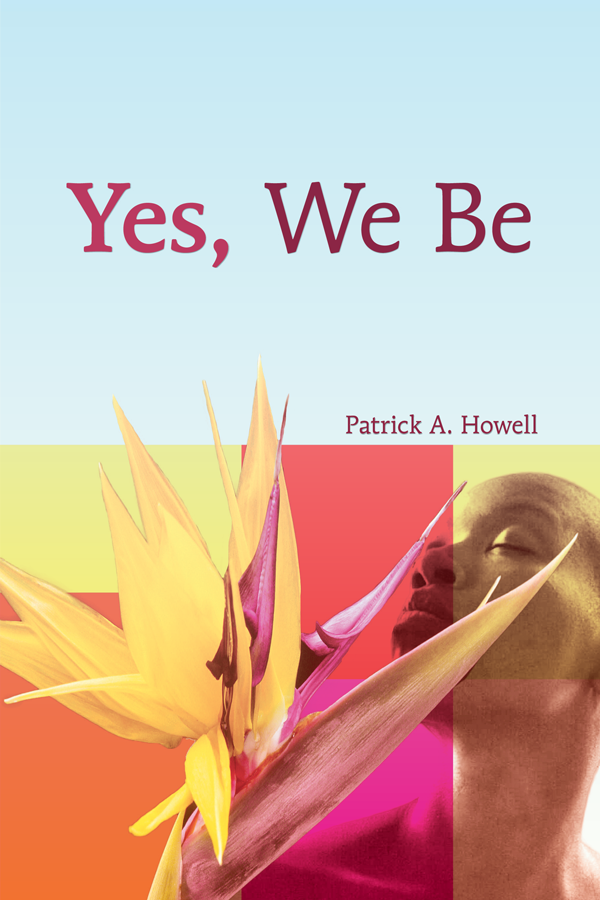
“Studio J is my personal vision of a Inner City Art Experience. It is space were you can view art and purchase art, listen to music, do a little spoken word or hold an event. It is located in Downtown Phoenix on the light rail for inner city travel.” Jenita Landrum, curator of Studio J and American artist
Studio J, located in Phoenix, Arizona, is operated by artist and curator Jenita Landrum who has been at this game for nearly four decades now. Jenita has been a professional artist for 38 years and an entrepreneur and manifestor in as much time, crafting her own beautiful space with her constructive critique of what it means to be a black woman within the paradigm of the American experience. Her mediums of choice have been watercolor, acrylic and mixed media, but she has harnessed the forces of hope, self-love and black woman unadulterated realness to powerful effect. She has created a community of artists though her entrepreneurism, setting up a shop that is in reality a liberation space for women. Studio J is a temple of power in contemporary America.
“Art means to me living a true creative life that is never knowing, but it also searching for what to feels right in my creation, and to define what is beautiful to look at.” Jenita Landrum, curator of Studio J and American artist
Here is what Jenita, a black woman in possession of her own power in every way, had to say about of some of her incredible work upon the planet:
“That space challenged me to be a curator, artist and business owner. It was in the North 5th Ave space that I became conscience about my artistic vision, the need for exhibition opportunities and how critical it is to not wait for opportunity to define what my mission and goals were going to be in this creative life.” Jenita Landrum, creator and curator of Studio J

New work for Jenita Landrum in the #(UN) Define Visible/Invisible Black Women in Columbus, Ohio at Shot Tower Gallery. “What a great opportunity to curate a show with beautiful black women.” says the curator Jenita
“I see my experience as an artist/gallery owner as a warm up to what I see myself doing in the near future, which is purchasing a large multi-functional building/ warehouse that encompass all the arts.” Jenita Landrum, curator, Studio J
1. Jenita, can you talk a little about Studio J and how that space represents your artistic visions and goals?
Studio J was my first art studio in Phoenix, Arizona. I just graduated with a BFA in painting, at that point I just wanted to keep creating, it was a space just for me. I out grew that space opened another space in Downtown Phoenix on 5th Avenue. I named it North 5th Avenue Studios and Gallery that was larger, it was large enough to have a gallery and had enough space to host five residential artists. That space challenged me to be a curator, artist and business owner. It was in the North 5th Ave space that I became conscience about my artistic vision, the need for exhibition opportunities and how important it is to not wait for opportunity to define what my mission and goals were going to be in this creative life. In order to fulfill my vision, mission and goals I need a graduate degree because no one was taking me seriously. It was in Columbus, Ohio after receiving my MFA, my work took off at the same time I opened The Art Loft Studios and Gallery 15 years ago in downtown Columbus, Ohio. The Art loft allowed me an entrance in to the art community, it took off with the help of national and international artist such as Sam Gilliam, Maurice Evans Annette Lawrence and host of others. It was important at that time to launch myself and many other artists by providing exhibition opportunities, community collaboratives, art workshops and mentorships. The launching of my career in Columbus took me to Africa, Germany and the recipient of individual Fellowships, commission and residencies.
Upon my return to Phoenix I needed a space to create new bodies of work, I opened Studio J I in Phoenix, Arizona, it was studio/event space and Studio J II in Scottsdale, Arizona. It served as gallery and event space. Studio J spaces allowed me to be a service for artist. I showed my work in the spaces but, also it created opportunities for beginning, emerging and local artist to show in a gallery. I see my experience as an artist/gallery owner as a warm up to what I see myself doing in the near future, which is purchasing a large multi-functional building/ warehouse that encompass all the arts. The space will provide residency for artist in any medium, it will have a performance space, classrooms for workshop/camps for children, an art gallery and with a gift shop, kitchen and sound/computer class rooms.
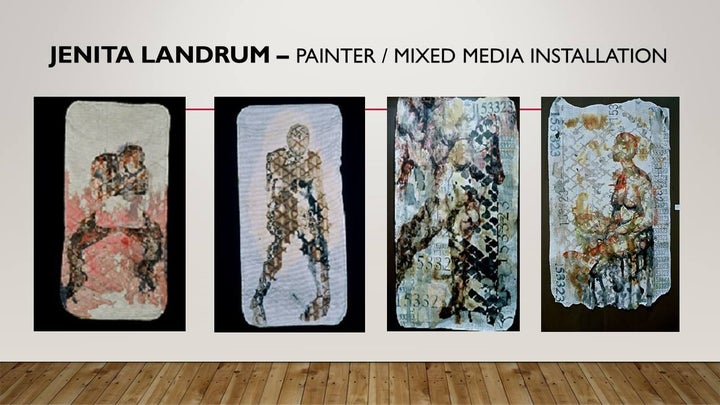
“My art is very layered, I work in series, the concept in every series begin with me, my thoughts, what I see or a feeling from social norms and systems that maybe unbalanced, or can withhold inequalities and that may reflect on self - identity and gender.” Jenita Landrum, curator of Studio J and American artist
2. Much of your work deals with the themes of “invisibleness” and cultural norms, appropriating resources - water colors and pop icons, studios and exhibits - to reflect how societal norms render images that make black women into caricatures of themselves. How have you seen society change in the 40 years since you began you work? Have you achieved the aims or goals you set out with your work?
As a Black Women that entered college in 1980’s, doing research it was hard to find positive images that looked like me and didn’t objectify our bodies, they were somewhat invisible or not easy accessible. Part of my drive is to leave a body of work that celebrates and focus on what makes black women resilient, powerful in their beautiful and to lift black artist to a higher prominence. I was blessed to attain three degrees from public universities. In formal education you were told that you were not good enough, that your creative images were not viewed as creative because they were black. In critiques you had to be 10 times better than other students, you were graded unfairly if you show black aesthetics. You had to defend your black reasoning based on the norms of art historical praise. If you wanted to graduate, you didn’t dare open dialog, embrace concepts or use images that defines what was art to you. It happens, often on calls of entries or for curator choice for exhibitions, if your work represents African American Art images; your images maybe seen as less then.
Today there are some changes on how black women are viewed, but the black genre is still on the low totem poll and is mostly viewed in black venues, the black aesthetics has lots of opportunities during the months of January and February. I do think that today black female artist are breaking molds and are creating the best art ever. We have learned to create with two faces, one face is your personal connection to self and the other face visual acceptance’s. The art world is slowly embracing black artist but not enough black women are sought after or accepted in major exhibitions. My goal is to connect with black women that are working within their blackness and are pushing their consciousness to continue making black art that is provocative, educational, art that pushes out of the box, artist that uses skills to bring more importance’s to black female artist and to genera. I have not achieved my personal goal as I artist, as an artist, I’m always reaching to define what is art to me.
“I honor them by doing what as they did, to uplift, encourage, mentor and create opportunity for the black artist voice.” Jenita Landrum, curator of Studio J and American artist
3. What is art to you? Is it a personal expression? It is politics? Is it a social platform? It is it a way of life. What does “art” mean to Jenita Landrum?
Interesting question. I’m asked all the time, “What is art to me” or “Where dose my work come from”? I will take you back to my undergraduate experience at Art School in Detroit Michigan - it was there that realized that my art was perceived as wrong. Creating art from a black prospective and from my own experience was not excepted, it was confusing and hurtful but it felt so right to me. I completed at a public university in Tempe Arizona where I felt further rejection because I wanted to paint and draw black faces and explore the black consciousness. But I kept working on my personal aesthetic using the tools that I learned. Once I was in Graduate School in Columbus I determine to do the work that I wanted to. I wanted to create the work that had meaning, that was beautiful to look at, it would be work that would grab hold to you long after a show, it would lay on your consciousness, it would be lasting. It is work that has a voice and gives a voice to the viewers.
My art is very layered, I work in series, the concept in every series begin with me, my thoughts, what I see or a feeling from social norms and systems that maybe unbalanced, or can withhold inequalities and that may reflect on self - identity and genderism. My work is only completed after it speaks to me, it has to say something to me then it takes on a political, social or feminist platform that it come through a black voice and black perspective. Art is also way of life of me I embrace my blackness, I celebrate my womeness and marvel at my creative spirit. It was not my intention to be called to lead, I told by the great painter Samella Lewis and Jacob Lawrence that it wasn’t enough to just do art, but you must embrace art, do all that you can do to further African American Art” I have followed the lead of many great artist that came before me. I honor them by doing what as they did, to uplift, encourage, mentor and create opportunity for the black artist voice. Through my work, it has lead me to have a voice and be the voice. Art means to me living a true creative life that is never knowing, but it also searching for what to feels right in my creation, and to define what is beautiful to look at.
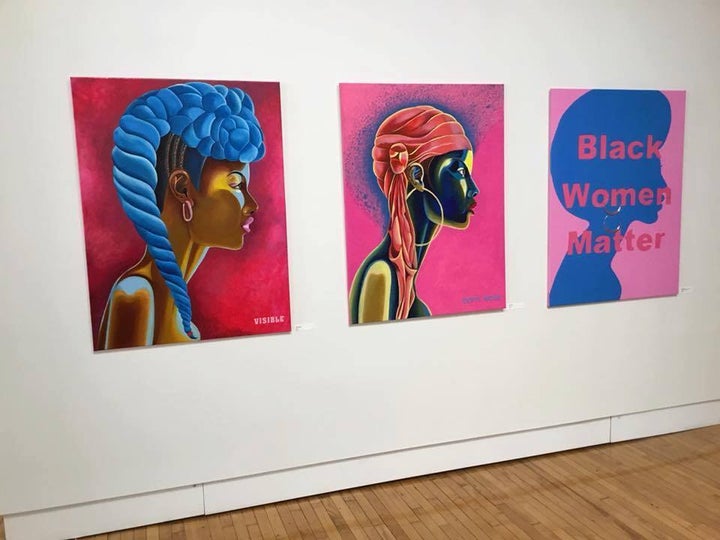
New work for Jenita Landrum in the #(UN) Define Visible/Invisible Black Women in Columbus, Ohio at Shot Tower Gallery. “What a great opportunity to curate a show with beautiful black women.” says the artist
“Her goal for the Studio J is an art environment that is intimate, intriguing and inviting for it viewers. The mission of the space is to challenges the viewer to question what art is and how we live with it. Studio J encompasses all art forms of visual arts, to music, film and mixed media, it welcomes collaborative expression.” Studio J
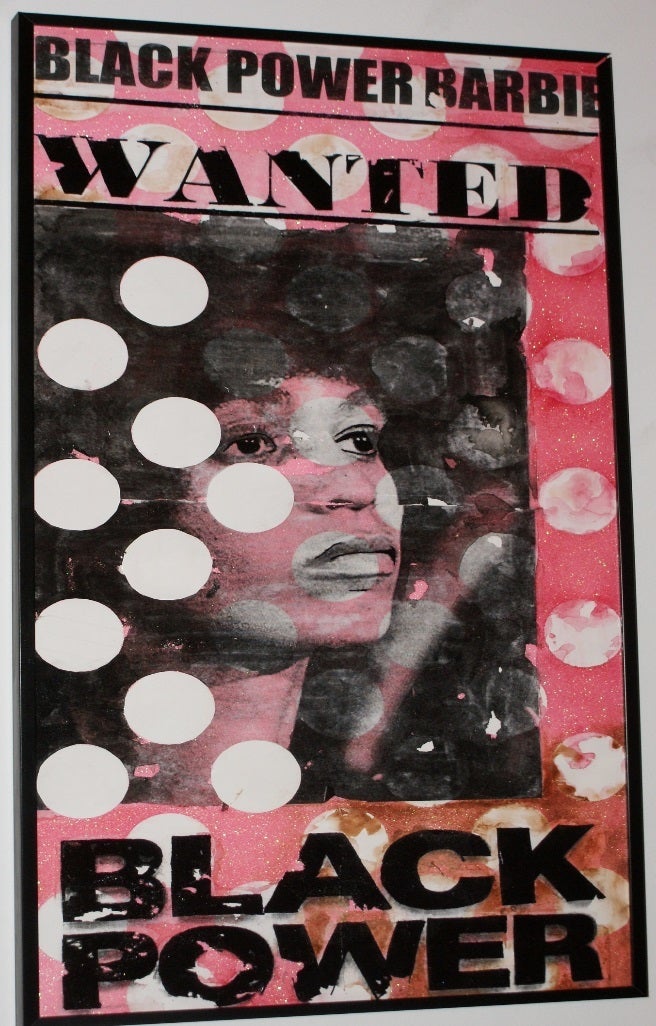
“Jenita is an old soul, the sage that guides you to your creative truth, Her art is the personification of centuries of stories held in her heart." Celeste S. Duckworth, author and entrepreneur with Vertikal Life Magazine

Title: Undefined- Visible/ Invisible Series “Black Power Barbie”
Size: 60” x 40”
Medium: Wall paper, watercolor, computer transfers
The Barbie series explores the image from inception where black women were not included they were invisible to creating images that focus on history where the black women voice contributed to change. Barbie is power an icon I’m creating images that highlight the strength of what a black women Barbie would look like to me.

Title: Cultural Conflict Series: Nita’s World
Size: 22” x 30”
Medium: Watercolor-Wet into Wet
Self Portrait, of my mind’s eyes. Exploring wall painting of Africa and USA and how wall painting has impact in communities and through traditions. Seen through the eyes of my three life guides, they are the vehicle for my vision. They can show a different view point without me saying it.
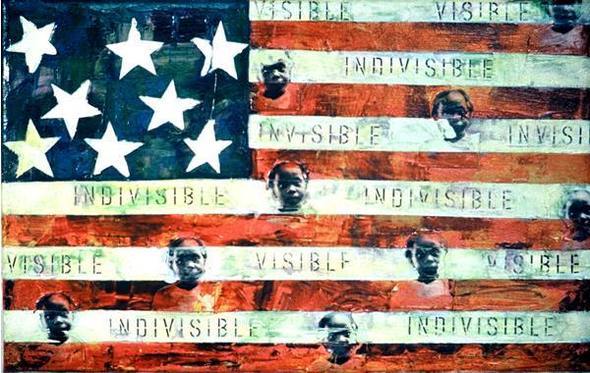
JENITA LANDRUM-BITTLES received BA in Studio and BFA in Drawing from Arizona State University in Tempe, Arizona. Her MFA from Ohio State University in Columbus, Ohio where she mastered painting and was selected fellow for Residences at Skowhegan School of Painting and Sculpture in New York and in Maine. She is currently the exhibition Director and Art Instructor at Ohio University in Athens, Ohio.
Bittles is the recipient of several fellowships and public commissions, and her works have been shown in over forty exhibitions in Ghana, Dallas, Chicago, Arizona, Indiana, Kentucky, Iowa and Michigan. The Columbus Dispatch, Maine Daily News, Dialogue Magazine, The Call and Post, Toledo Blade and Lima news, among many others have reviewed her artwork.
Patrick A. Howell is the author of “Yes, We Be”, a poetic manifesto of the Global International African Arts Movement or Global I Am by Jacar Publishing, due out in February
